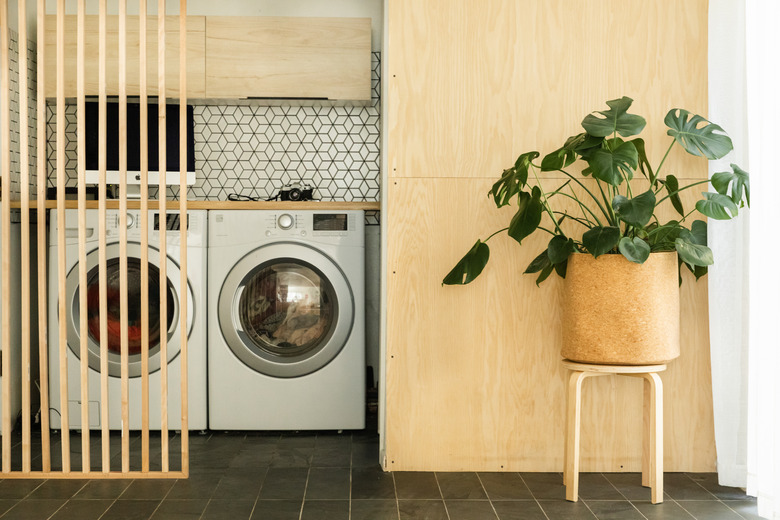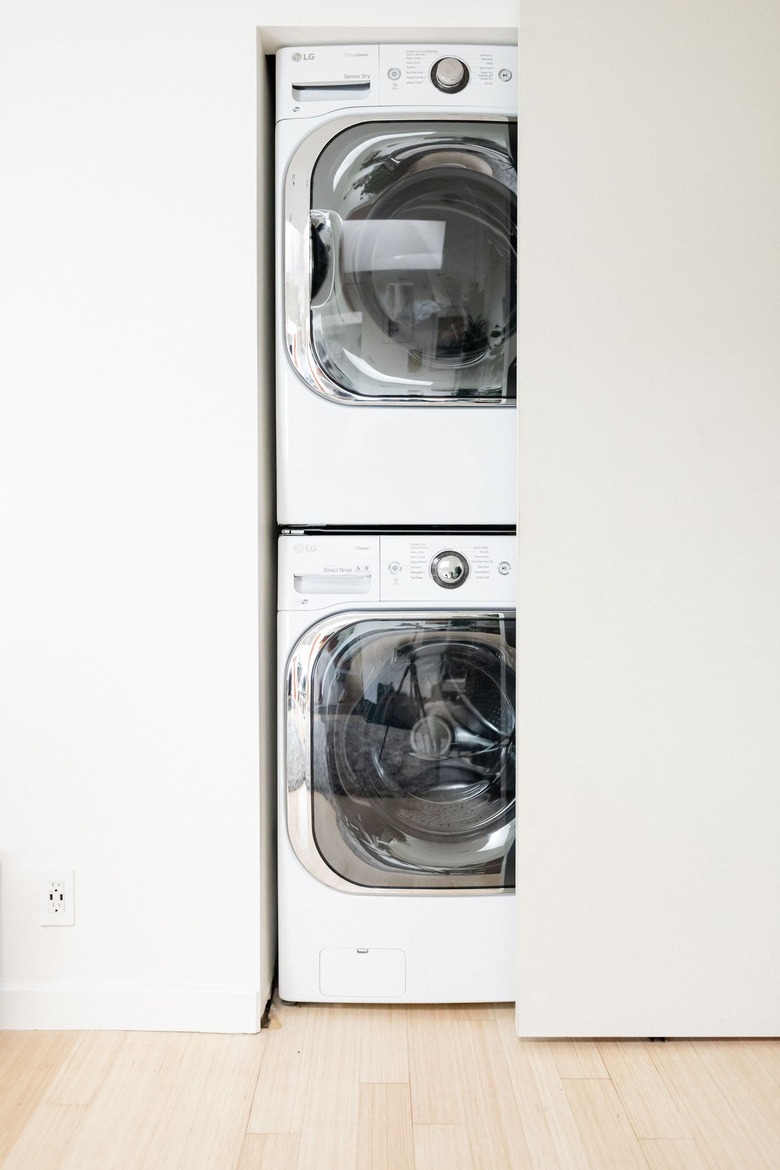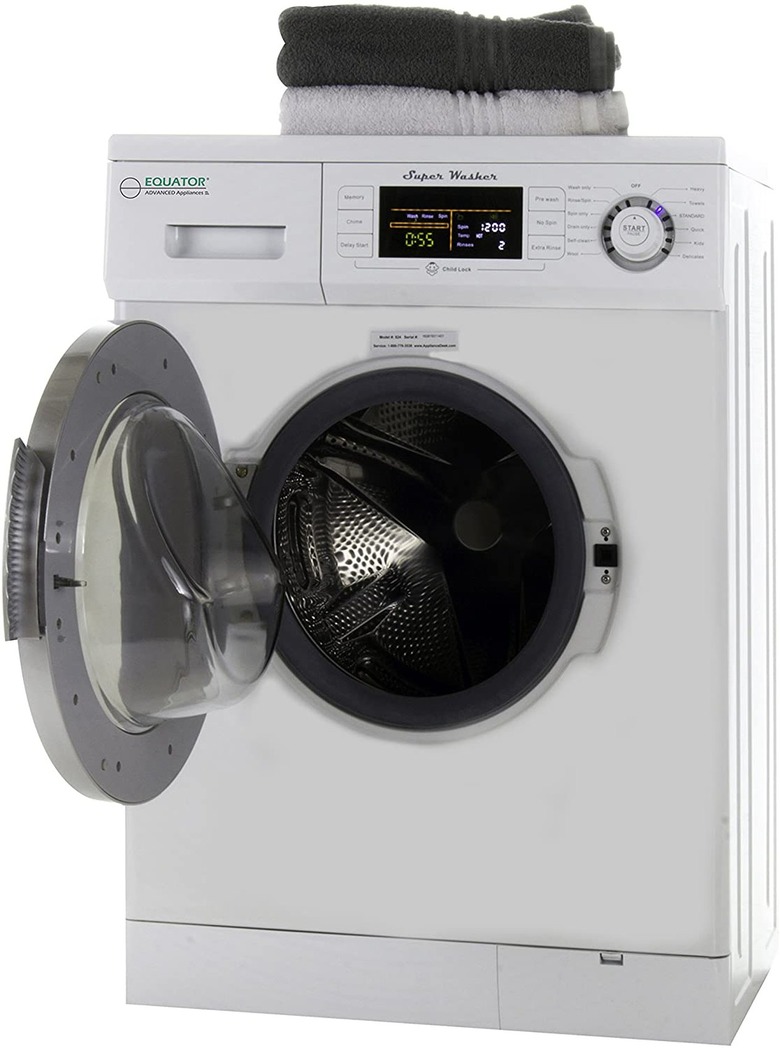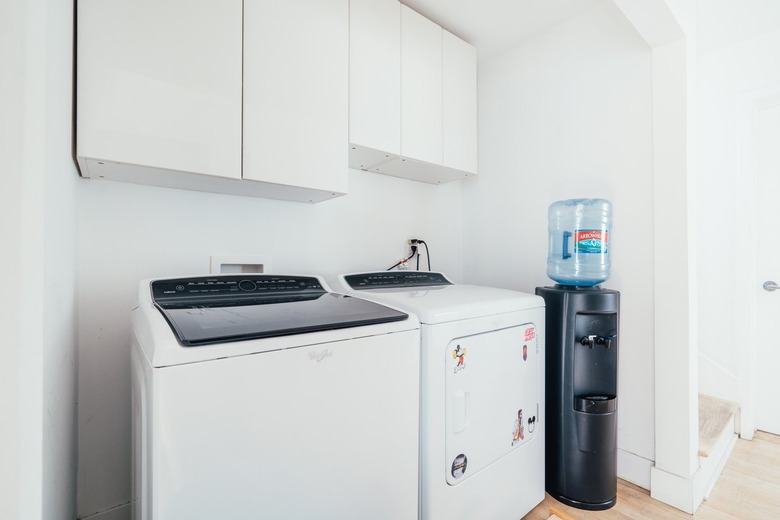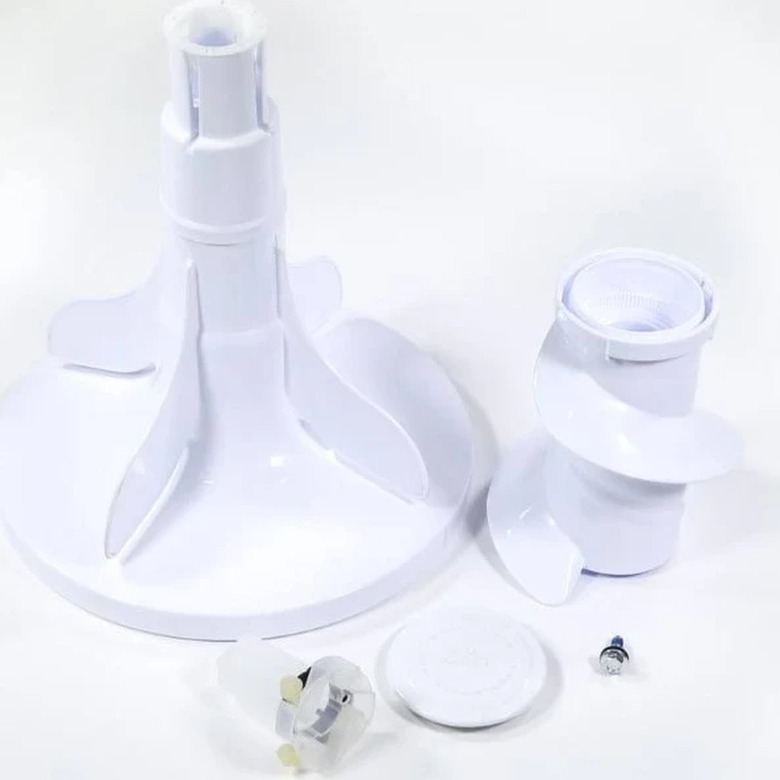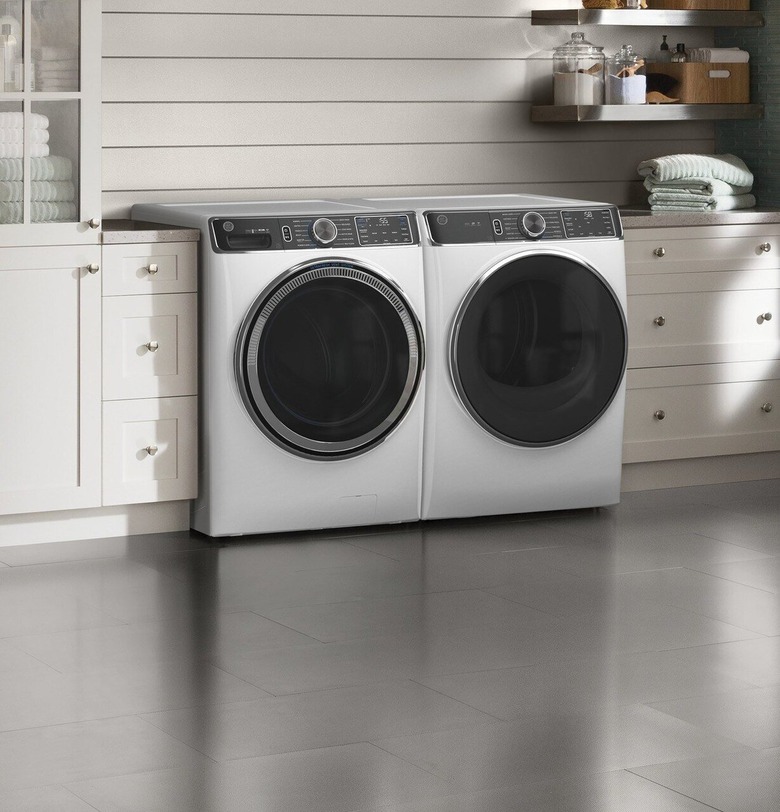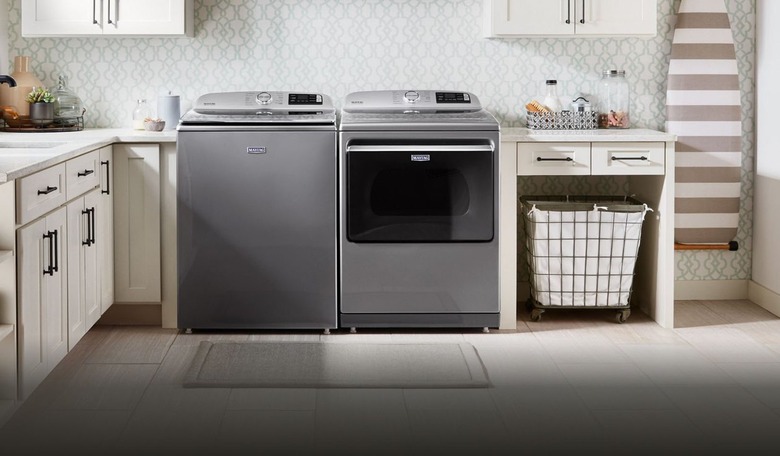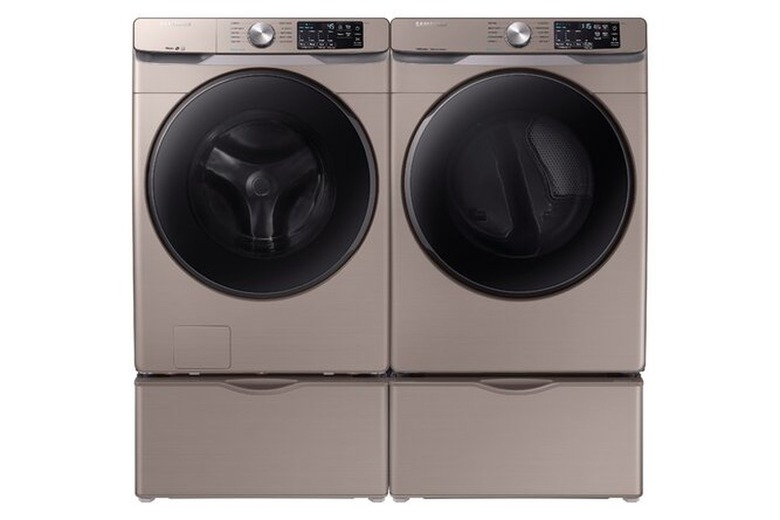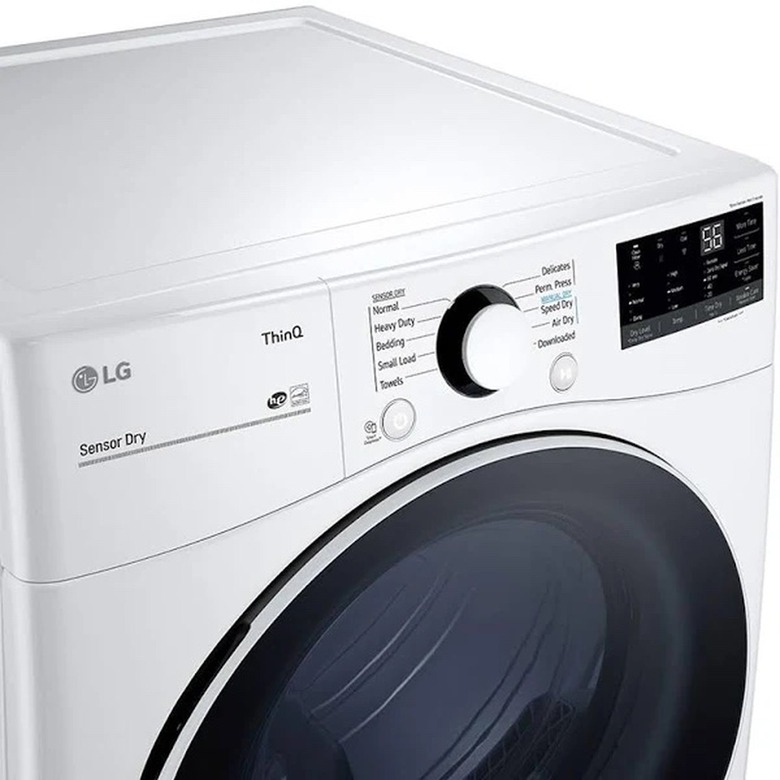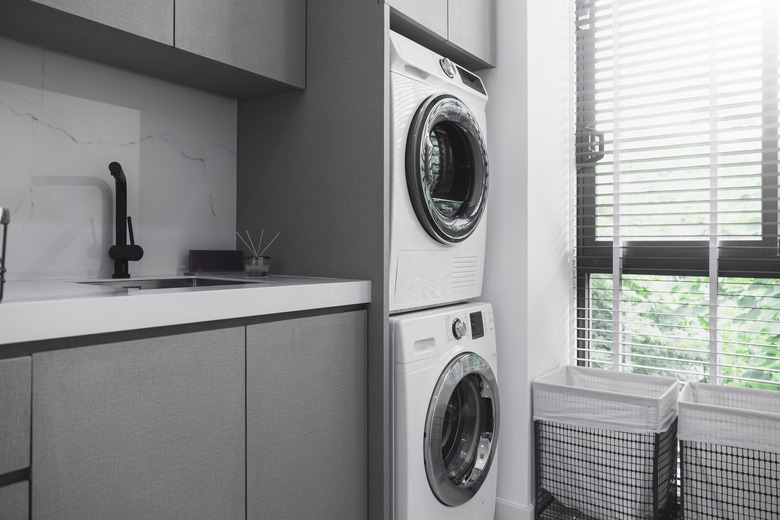How To Choose A Washer And Dryer: 11 Things To Consider For These All-Important Purchases
We may receive a commission on purchases made from links.
One day, as you stand in front of your washing machine, it hits you: There are two universal truths about being an adult that no one ever tells you. The first is that you will spend your entire life trying to figure out what's for dinner. The second is that the laundry never ends. (Seriously, how many people live here?)
Unfortunately, you're on your own about dinner, but we can help you figure out how to buy the right washer and dryer to make laundry (and life) a little easier. There are more options and choices to make when choosing these appliances than ever before. While there isn't anything wrong with being open-minded, it's a good idea to have some clue of what you need before hitting the appliance store or perusing online.
1. Types of Washers and Dryers
1. Types of Washers and Dryers
A good place to start when shopping for washer and dryer sets is to determine what type of units you want. Stand-alone, side-by-side units are often the norm, and going this route allows you to mix and match a washing machine and a dryer from two different brands. Stackable washers and dryers are also a popular option, but make sure you know what you're getting. Sometimes, stackable units are joined together and called a laundry center. Other times, stackables are made using two separate appliances and involve mounting the dryer above the washer using brackets.
If you're living in cramped quarters but don't like the idea of stacking your units, consider an integrated machine. These units both wash and dry your clothes for you. Laundry may take a little longer this way, but all-in-one units are a terrific space saver.
2. Size
2. Size
It doesn't matter what washing machine or dryer you like if you can't fit them in the house. Step one of buying a washer and dryer is measuring your doorways and stairwells so you can choose appliances that fit in your home — and bring these measurements with you when you go shopping. Standard washing machines and dryers are usually 27 or 27 1/2 inches wide but can easily be 30 inches. Compact washers typically measure about 24 inches across.
Once your appliances are inside, you need space to use them. When measuring the depth of your appliances, allow an extra four to six inches behind them for hookups. Top-loading appliances need about 20 inches of clearance above them, while front loaders need 20 to 25 inches of door clearance.
3. Appliance Capacity and Load Size
3. Appliance Capacity and Load Size
Ideally, you want to try to choose laundry appliances that are small on the outside but large on the inside. Compact washing machines offer anywhere from 1.6 to 2.4 cubic feet and hold about five to 10 pounds of clothing at a time. Large units have a large capacity, of course. Don't go too big with your washer, however, unless you can do the same with your dryer.
Because your clothes fluff up as you dry them, your dryer needs to hold more than your washer. If your washer has two feet of cubic space, aim for a dryer that offers four. Whenever possible, try and choose a dryer that holds twice as much as your washing machine. As a general rule, front-loading machines hold more than top loaders.
4. Top or Front?
4. Top or Front?
Although the debate hasn't ruined as many family dinners as politics, people are surprisingly passionate about their love of either front-loading or top-loading washing machines. Because of the way they tumble the clothes, front-load washing machines use less water and tend to be a bit gentler on your clothes. They also spin faster, so they wring out more water before the clothes head to the dryer, which translates to less drying time.
Front loaders are more expensive, however, and they require a bit more care. They tend to need wiping down once in a while, and you will likely find that you need to keep the door open between loads. Otherwise, mold may grow inside the washer and around the door seal (and here's how to get rid of it). Front-load washing machines were once the superior choice for washing bedding and other bulky items, but the removal of the agitators from some top-load washers has evened the score on this front.
5. Agitator or Impeller?
5. Agitator or Impeller?
If you opt for a top-load washing machine, you'll need to choose between an agitator and an impeller (aka the pieces in the machines that actually get your clothes clean). An agitator is the vertical post that you're probably used to seeing in the middle of the washing machine. The agitator cleans clothes by rubbing against them to break up stains and dirt. Some people are convinced that agitators wear out clothes quicker, but others see no difference.
Some washing machines skip the agitator and now use an impeller instead. The impeller sits at the bottom of the washer and helps to move your clothes around inside the machine's tub. This movement allows the clothes to get clean by rubbing against each other rather than the agitator. This process uses less water than an agitator. It also makes washing bulky items, like comforters, easier since there is no agitator taking up space in the middle of the washing machine.
If you wash a lot of large items or big loads, an impeller may work better for you than an agitator. Impellers tend to clean better overall, but agitators are better at tackling stains. The decision between the two is largely a matter of personal preference.
6. To Stack or Not to Stack
6. To Stack or Not to Stack
When you're working with limited space, you may have no choice but to stack your washer and dryer on top of each other. If you're stacking, you'll typically need a front-loading washer, unless you get an all-in-one unit. In this arrangement, the washing machine is placed on the bottom of the stack and the dryer on the top. This configuration works well but can be frustrating depending on your height. Shorter users may need a step stool to reach socks that hide out in the very back of the dryer.
If you do decide to stack, you're not limited to buying laundry centers built together. Instead, you can opt to stack traditional side-by-side units with a kit that includes metal support channels and mounting hardware. This is a great option to have, especially if you choose a Maytag washing machine but prefer a GE dryer, for example.
7. Electric vs. Gas
7. Electric vs. Gas
Like the stackable decision, this one may be made for you. If you have a natural gas line in your home, you can choose between gas and electric. If not, you have to go with electric. An electric dryer requires a special 240-volt electrical outlet in the laundry room. A gas dryer requires a dedicated natural gas hookup and a standard 120-volt electrical outlet (with GFCI protection).
Electric dryers cost less to purchase, but gas dryers cost less to run. This is because they use less electricity, and gas is generally cheaper than electricity. The price of gas can change, however, so this may not always be the case. If you don't have gas but you're thinking about adding it to your home, you may want to hold out and buy a new gas dryer once you have it. It's generally not cost-effective to run a gas line just for a dryer, however.
8. Brands You Can Trust
8. Brands You Can Trust
You certainly don't want to pay more for your appliances just because they're wearing a brand name, but there is something to be said for going with retailers you know for large purchases. It's also beneficial to read a few product reviews in publications like Consumer Reports before plunking down your cash. When you do, you'll see that LG is currently receiving high marks for washers and dryers that are both gentle and durable.
Electrolux is also receiving high marks for its washing machines but seems to be having some problems with overly narrow dryer vents. If you like the brand's washer, consider pairing it with a dryer from a different manufacturer. Meile also makes solid products that can last 20 years, but their washing machines are compact. This may work if you're single or in cramped quarters but probably won't do for a bigger family.
Of course, old favorites like Maytag, Samsung, and GE are still in the laundry appliance game, and all have a good reputation. There is nothing wrong with opting for a Maytag if your mom loved hers, and your brother raves about his. There is also no shame in sticking with a brand that has served you well in the past.
9. Energy Efficiency and Water Usage
9. Energy Efficiency and Water Usage
If you want to save the planet and save yourself some money at the same time, opt for high-efficiency washing machines. They use much less water and save about 6,000 gallons of water per year per family. Many still give you the option of using more water when needed, such as when washing an unusually large load.
Look for products that bear the ENERGY STAR logo as well. In order to claim the ENERGY STAR, appliances must meet the criteria set forth by the U.S. Environmental Protection Agency and the U.S. Department of Energy. Washers and dryers that carry the star tend to use 25 and 20 percent less energy, respectively.
10. Extra Features
10. Extra Features
Technology is touching more and more aspects of our daily life, and laundry is no different. High energy efficiency and water-saving cycles are now standard on many washing machines, and wrinkle-preventing extended dryer cycles are easy to find. There are a few newer features you may want to consider, however.
Some washing machines now offer a speed cycle that can finish a load of laundry in only 15 minutes. Others now feature two completely separate compartments, allowing you to wash two loads of laundry at once. Many washing machines now feature a self-clean cycle that cleans the drum by itself.
Many new washers feature noise-reducing technology that lets them run much more quietly than older washing machines. This is handy when your washing machine is upstairs, and you want to do the wash after the kids are in bed. To achieve this quiet performance, some manufacturers surround the laundry tub with balancing rings to reduce vibrations. Others use sensors and electronic intervention to keep loads balanced and shock absorbers or sound-dampening pads to keep the machine quiet.
Wi-Fi-enabled washers and dryers tell you when your laundry is done and let you pause a load midcycle from your phone or electronic assistant. Many dryers now use stainless steel drums to reduce static, and several feature a removable drying rack that allows you to dry sweaters and other items that need to lie flat. Several now offer a steam cycle as well that makes clothes softer and helps prevent wrinkles.
Features you don't need only serve to drive up appliance costs, but take a moment to consider which features you may find truly helpful. If you never line dry your clothes, for instance, doing two loads of laundry at once when you have only one dryer may not benefit you, but a washer that runs quietly might. The trick is to think about whether and how you will actually use certain features rather than getting caught up in the wow factor.
11. When to Shop
11. When to Shop
If your washing machine just died, the time to buy a new one might be right now. If you can, however, it may prove cheaper to wait until the fall. New models tend to arrive in stores in September and October, so you may be able to snag a good deal on last year's models if you shop then. If you miss this window, there is always November. Black Friday deals can save you a lot of money, and they start earlier and earlier each year.
References
- Wirecutter: The Best Washing Machines (and Their Matching Dryers)
- Forbes: 10 Of The Best Washers And Dryers To Make Laundry Day Way Easier
- Digital Trends: How to Choose the Right Washer and Dryer
- Maytag: 10 Things To Look For When Buying A Washer And Dryer
- Maytag: Gas Vs. Electric Dryers: What's the Difference?
- Maytag: Washing Machines With Agitators vs. Impellers
